A pulley is attached to one arm of a balance and a string passed around it carries two masses m1 and m2. The pulley is provided with a clamp due to which m1 and m2 do not move and the balance is in equilibrium. On removing the clamp m1 and m2 start moving with respect to pulley. The counterweight reduced or increased to restore balance is: 
m21gm1+m2
(m1+m2)2gm1+m2
m22g(m1+m2)2
zero
The correct Answer is:B
When theh clamp is removed, the pull on the left arm is 4m1m2gm1+m2
When m1 and m2 do not move, the pull is (m1+m2)g
ΔW=(m1−m2)2m1−m2
Topper's Solved these Questions
- TEST PAPERSBOOK - RESONANCE ENGLISHCHAPTER - TEST PAPERSEXERCISE - PART - II PHYSICS
106 Videos
- SIMPLE HARMONIC MOTION BOOK - RESONANCE ENGLISHCHAPTER - SIMPLE HARMONIC MOTION EXERCISE - Advanced Level Problems
13 Videos
- TEST SERIESBOOK - RESONANCE ENGLISHCHAPTER - TEST SERIESEXERCISE - PHYSICS
130 Videos
Similar Questions
A pulley is attached to one arm of a balance and a string passed around it carries two masses m1 and m2 . The pulley is provided with a clamp due to which m1 and m2 do not move . On removing the clamp m1 and m2 start moving . How much counterweight is to be reduced or increased to restore balance ?

View SolutionA pulley fixed to the ceiling carried a thread with bodies of masses m1 and m2 attached to its ends. The mases of the pulley and the thread are negligible and friction is absent. Find the acceleration of the centre of mass of this system.
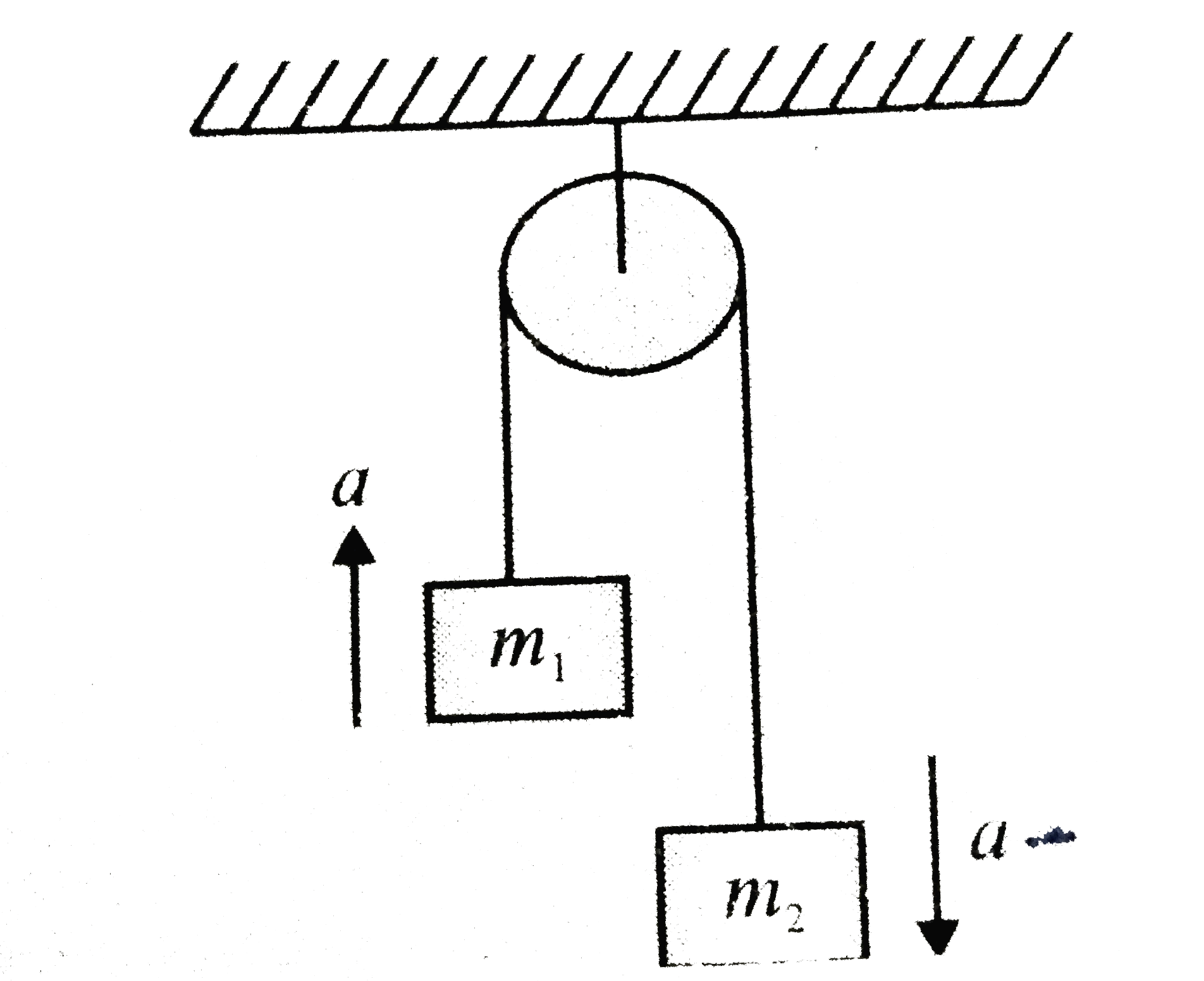
View SolutionIn the arrangement shown, the pulleys, string and the spring balance, all the ideal. If m1>m2, then the reading of the spring balance is
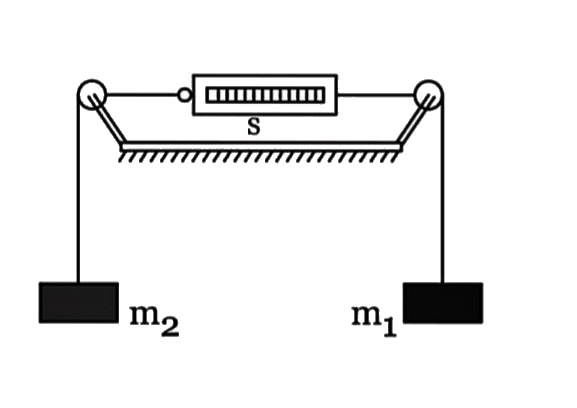
View SolutionConsider the system of masses and pulleys shown in fig. with massless string and fricitionless pulleys.
(a) Give the necessary relation between masses m1 and m2 such that system is in equilibrium and does not move.
(b) If m1=6kg and m2=8kg, calculate the magnitude and direction of the acceleration of m1.
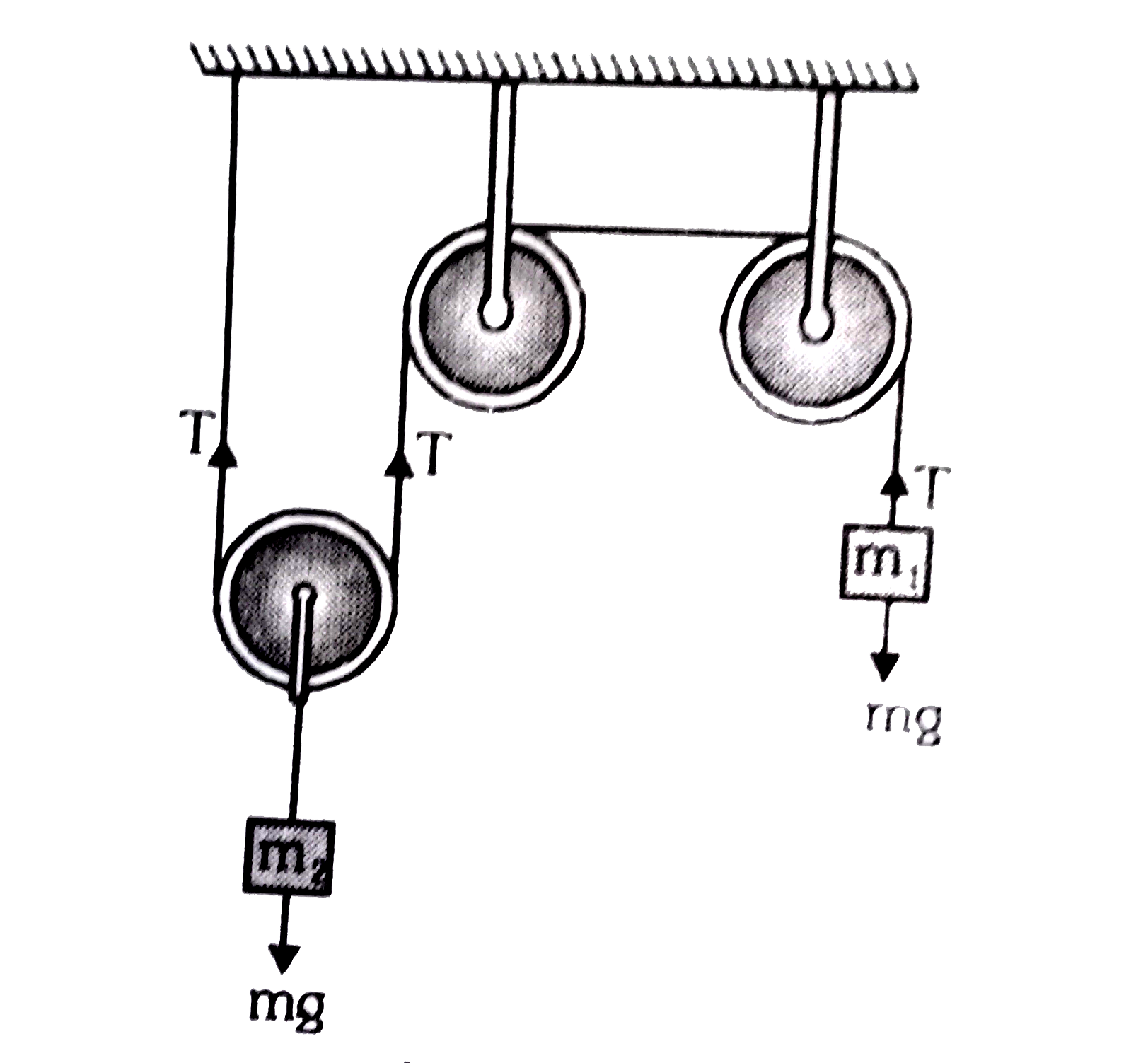
View SolutionTwo masses m1 and m2(m2>m1) are hanging vertically over frictionless pulley. The acceleration of the two masses is :

View SolutionTwo masses m1 and m2(m2>m1) are hanging vertically over frictionless pulley. The acceleration of the two masses is :

View SolutionFind the relation between acceleration of the two blocks m1andm2. Assume pulleys are massless and frictionless and the strings are inextensible .
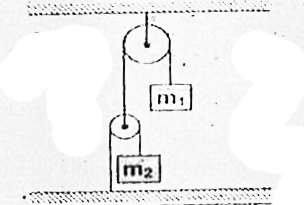
View SolutionA pulley fixed to the ceiling of an elevator car carries a thread whose ends are attached to the masses m1andm2. The car starts going up with an acceleration a0. Assuming the masses of the pulley and the thread as well as the friction to be negligible, find:
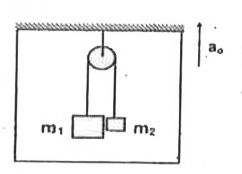
(a) the acceleration of the load m1 relative to the elevator shaft and relative to the car
(b) the force exerted by the pulley on the ceiling of the car. Given m1>m2.
View SolutionBlocks of mass M1 and M2 are connected by a cord which passes over the pulleys P1 and P2 as shown in the figure. If there is no friction, the acceleration of the block of mass M2 will be
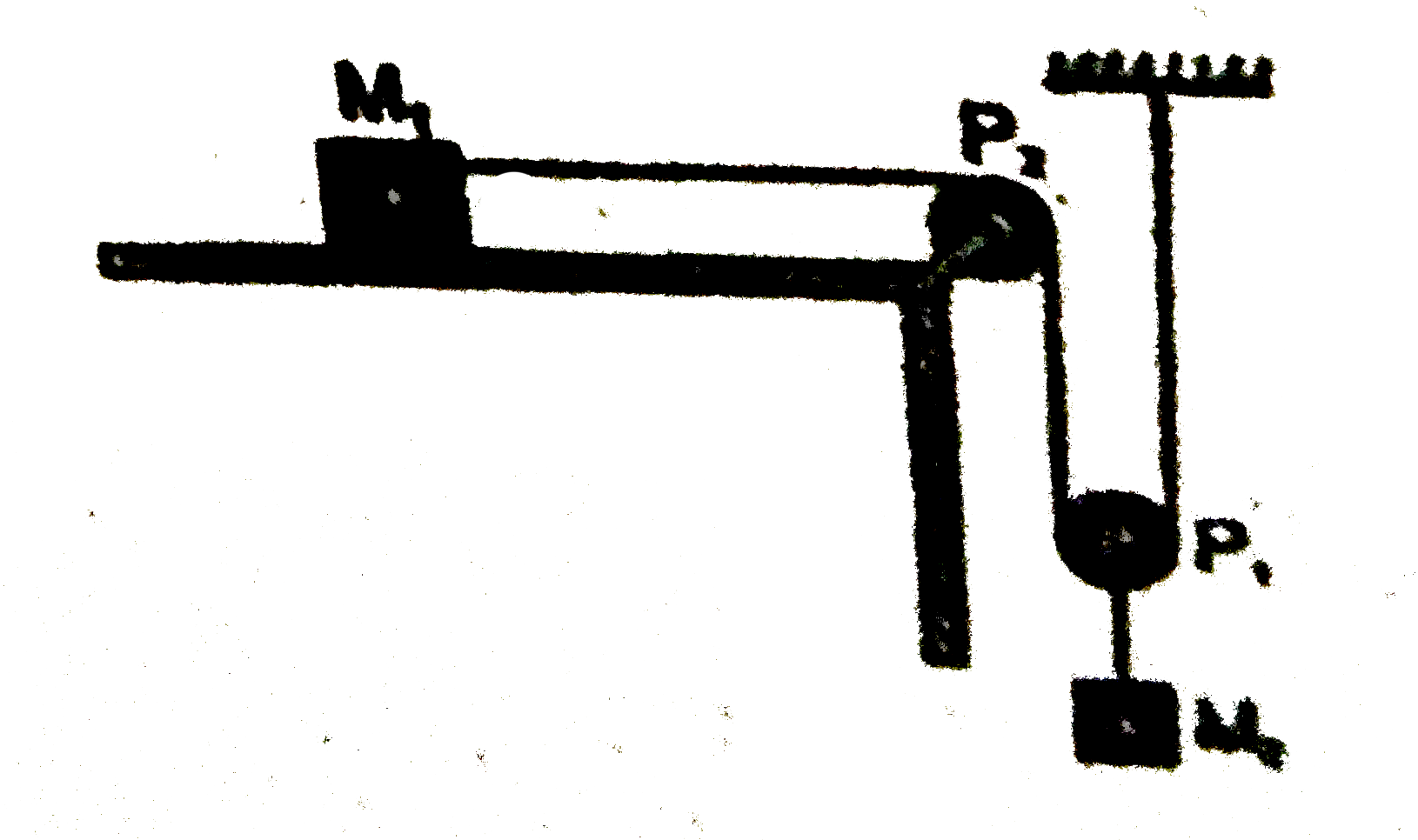
View SolutionTwo masses m1 and m2 which are connected with a light string, are placed over a frictionless pulley. This set up is placed over a weighing machine, as shown. Three combination of mass m1 and m2 are used, in first case m1=6kg and m2=2kg, in seconds case m1=5kg and m2=3kg and in third case m1=4kg and m2=4kg. masses are held stationary initially and then released. if the reading of the weighing machine after the release in three cases are W1,W2 and W3 respectively then:
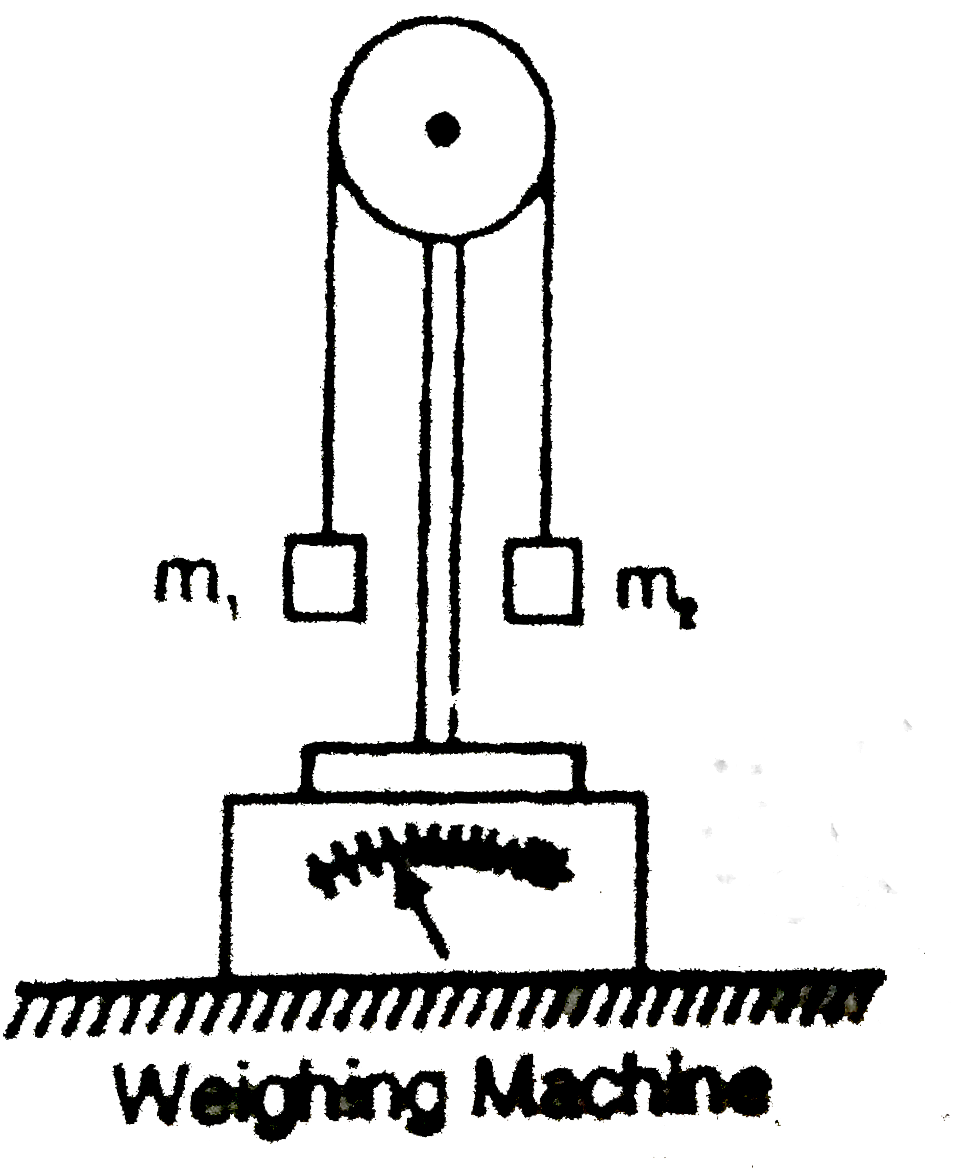
View Solution
